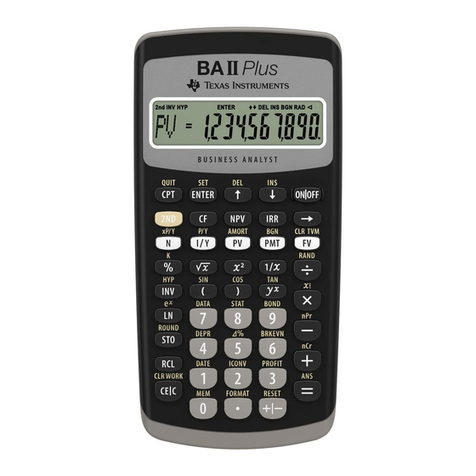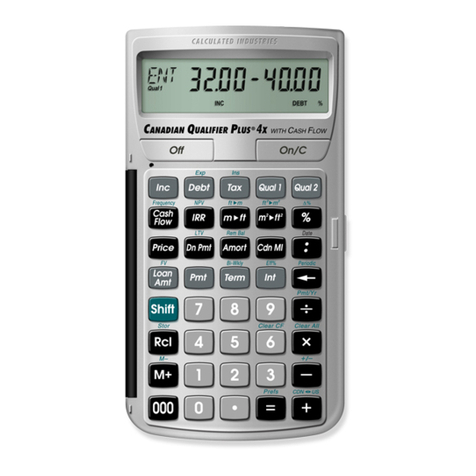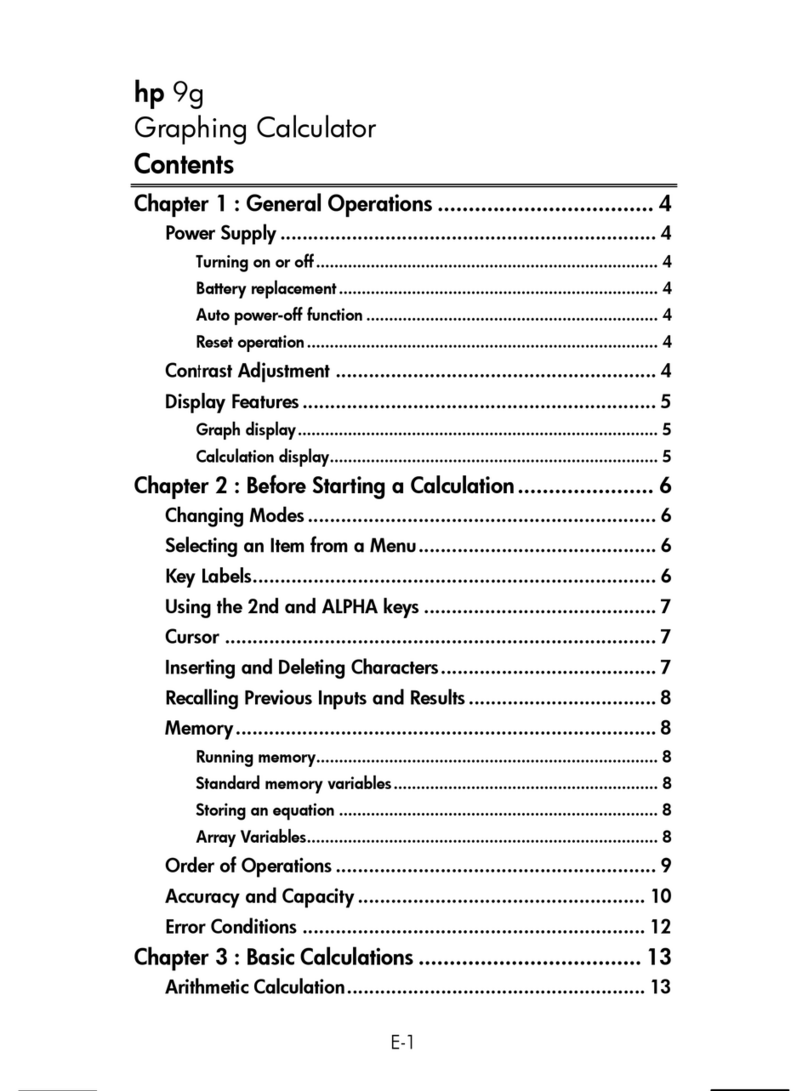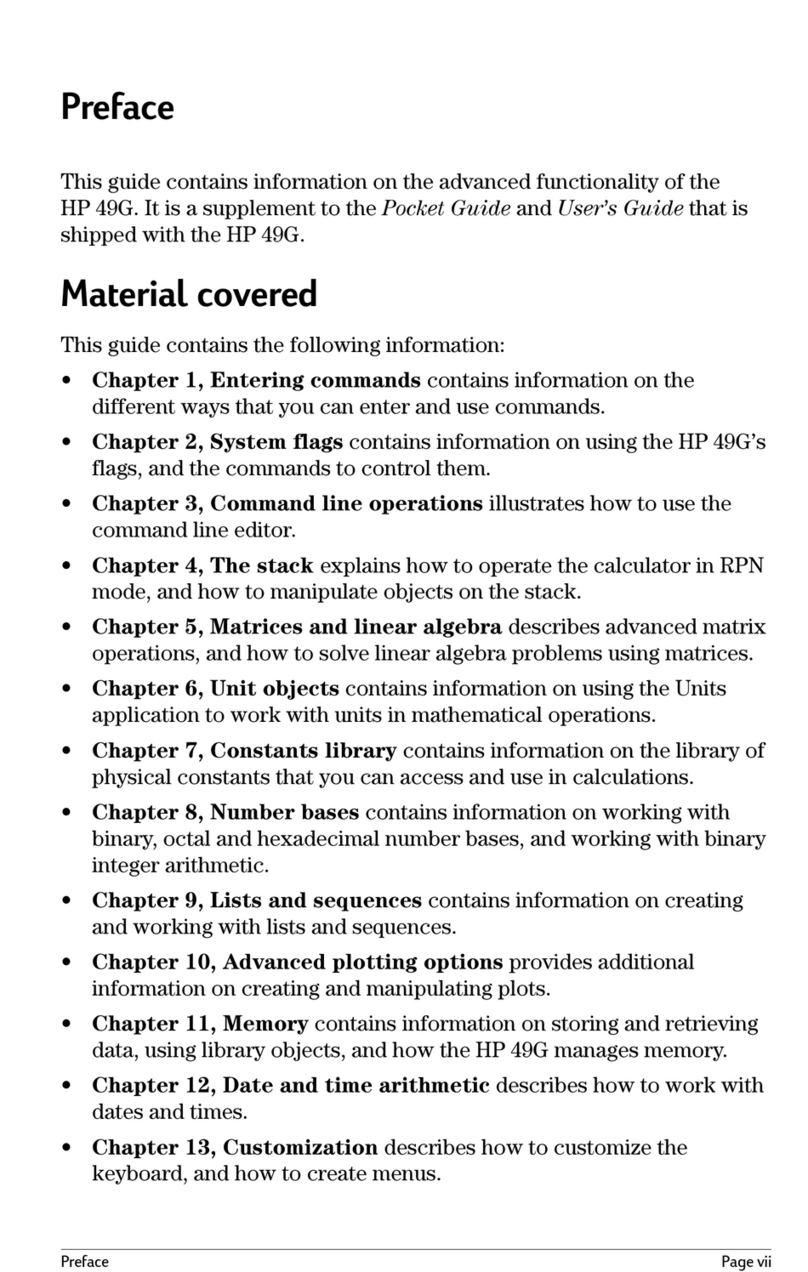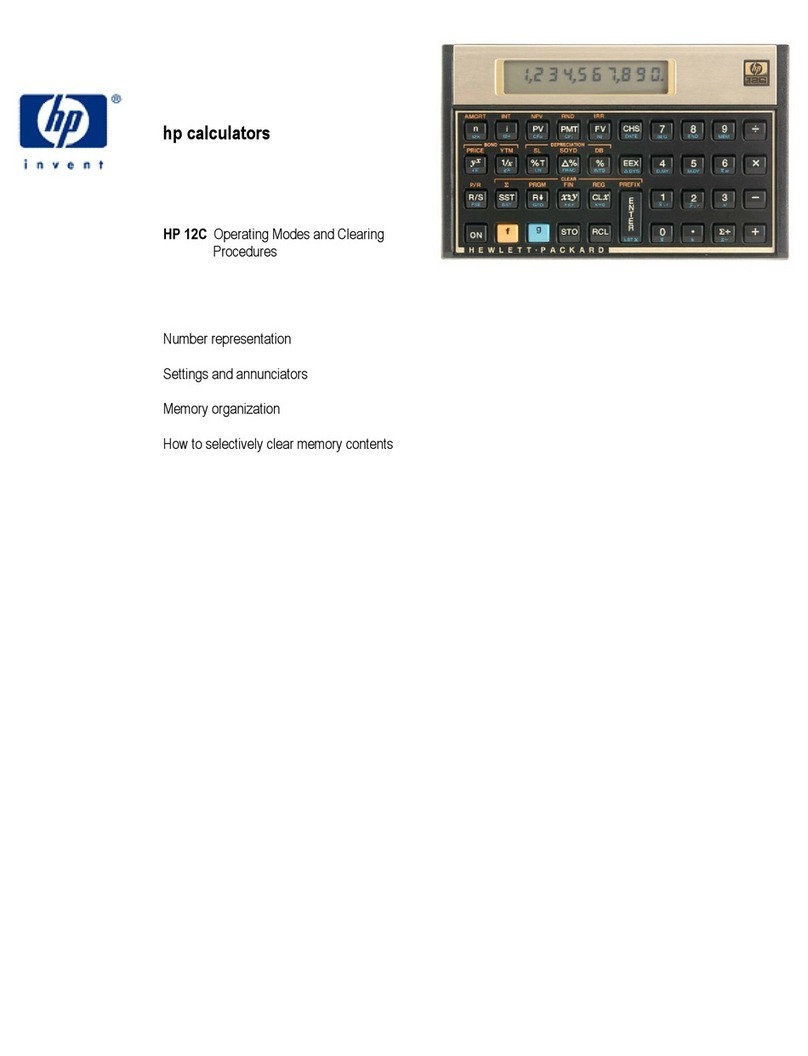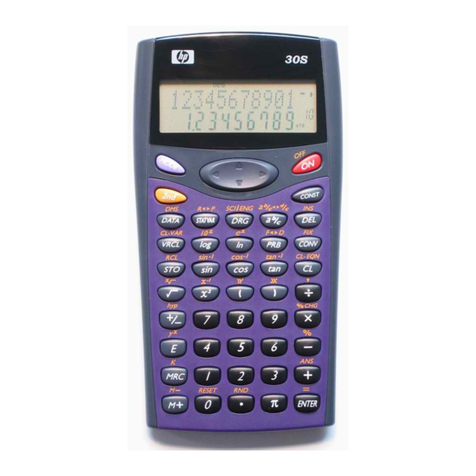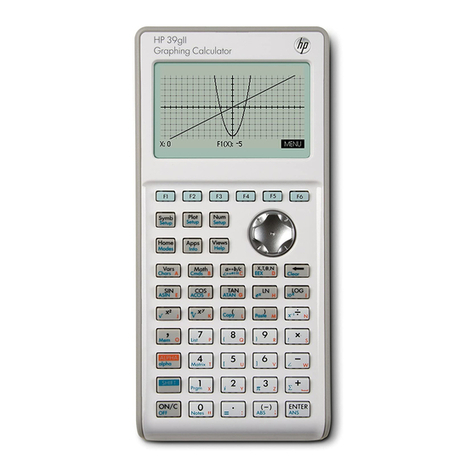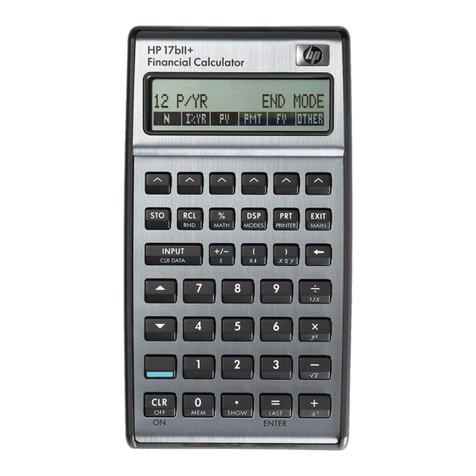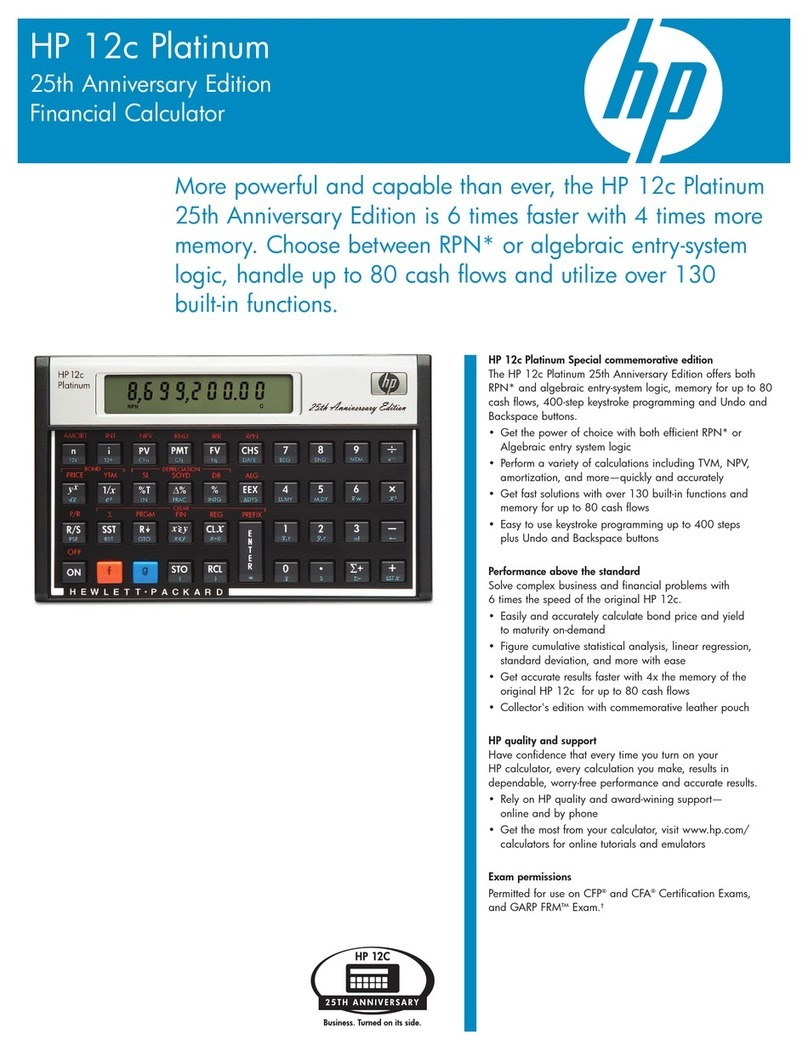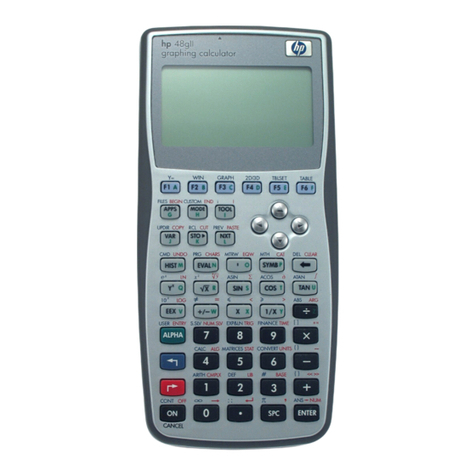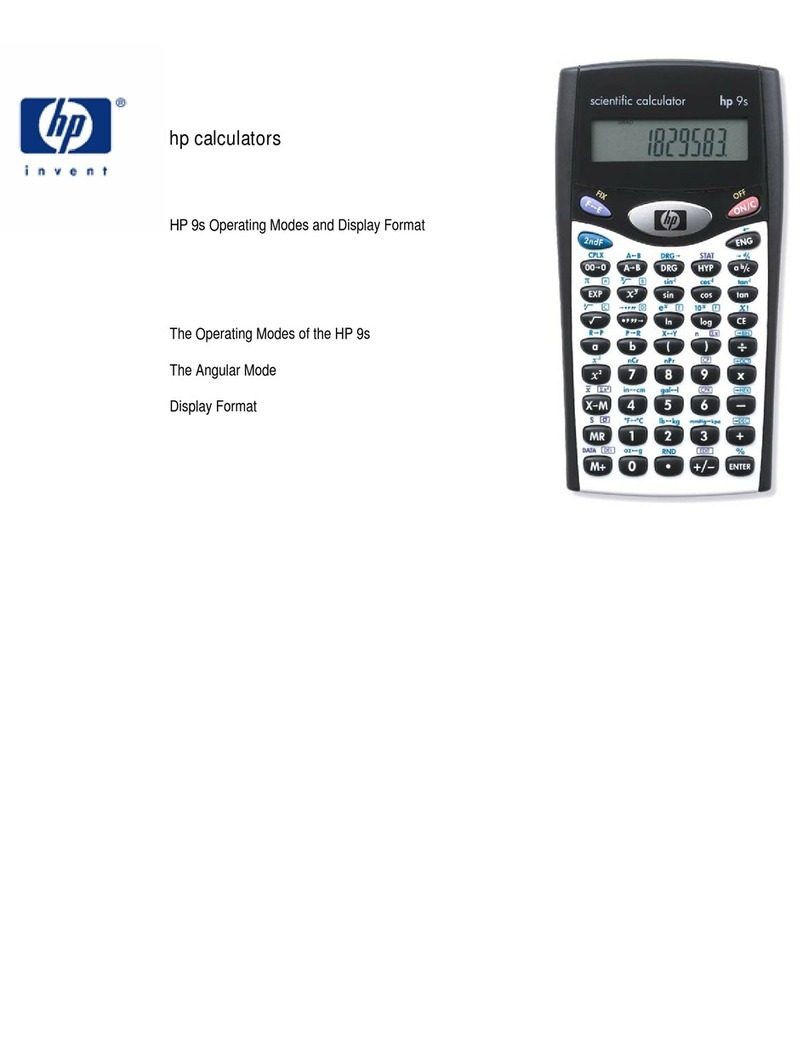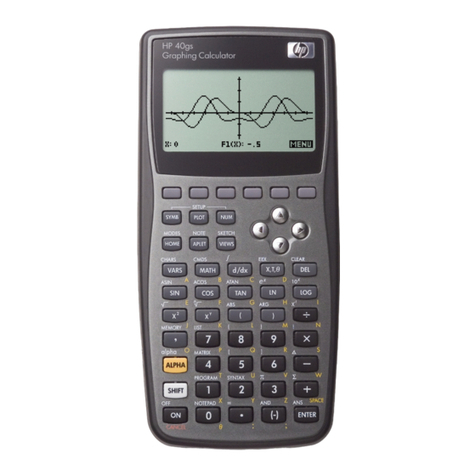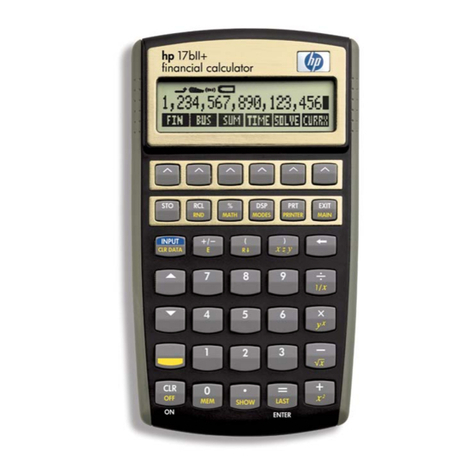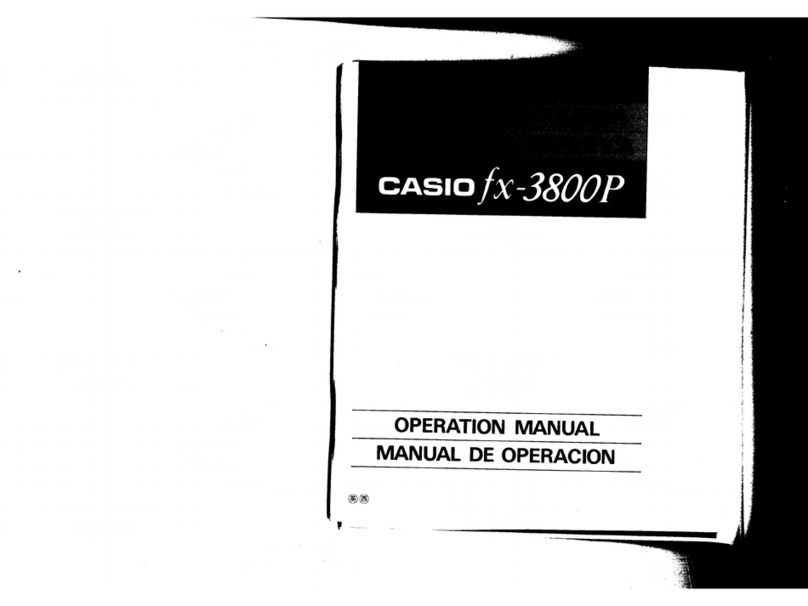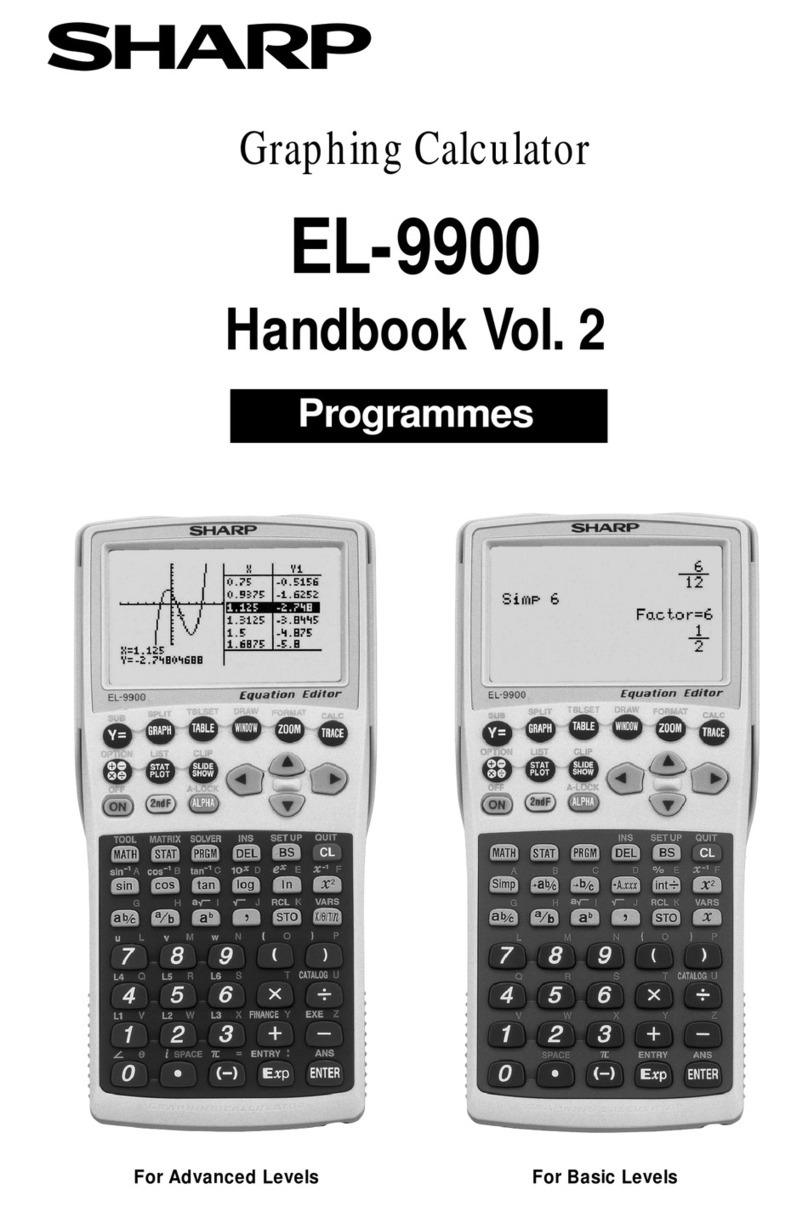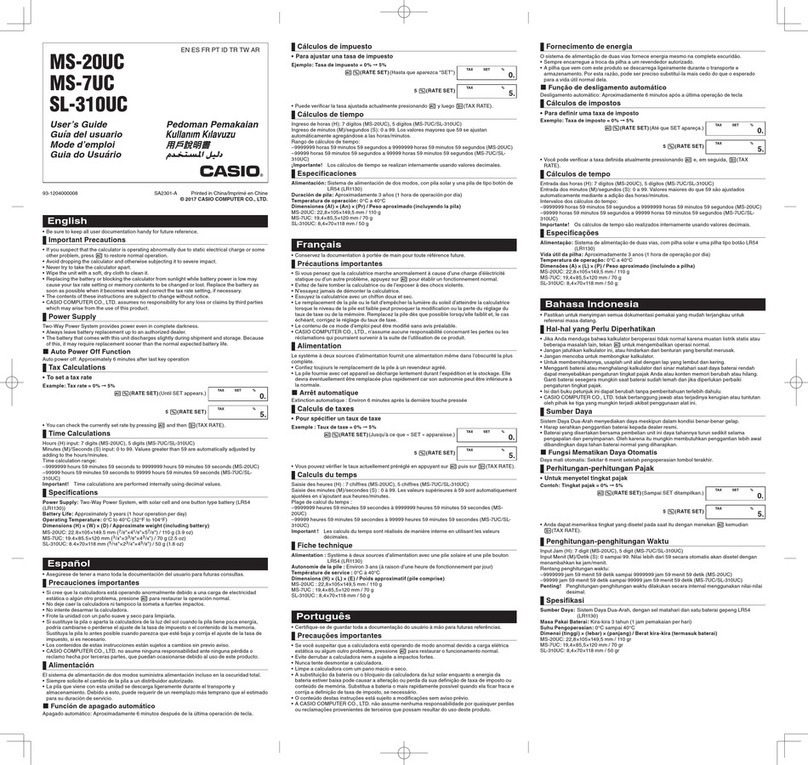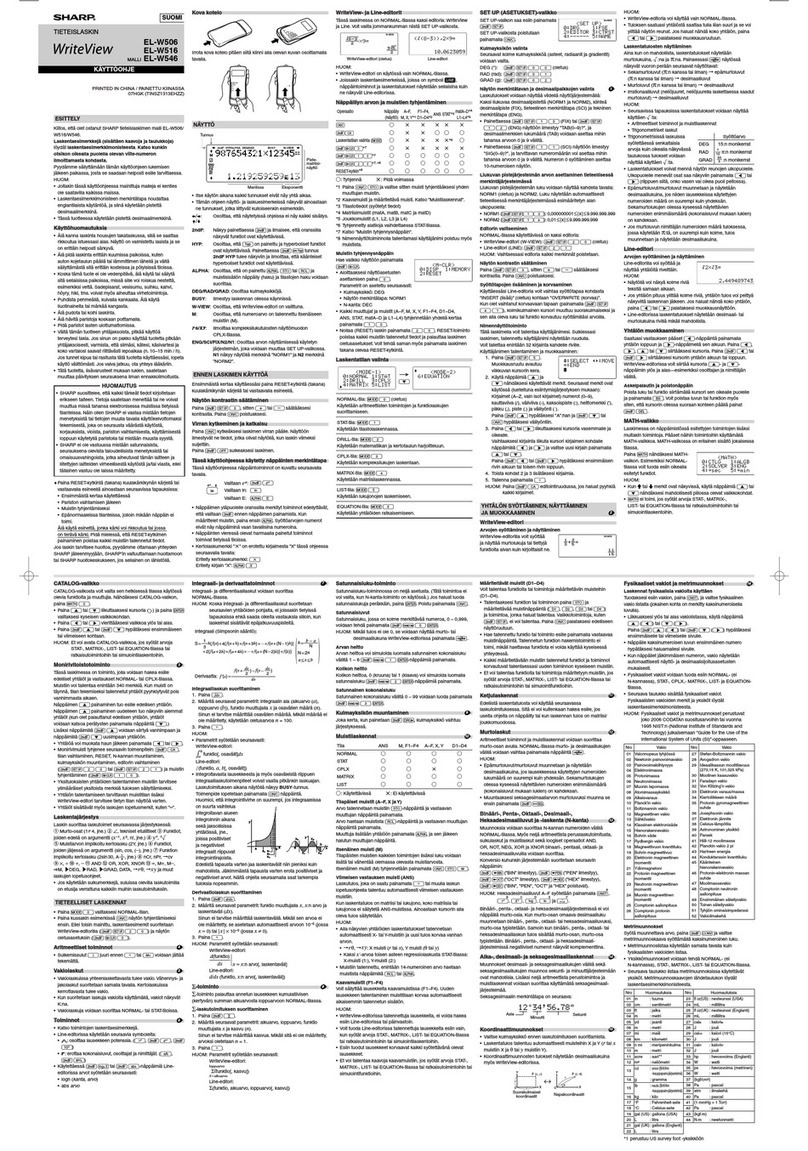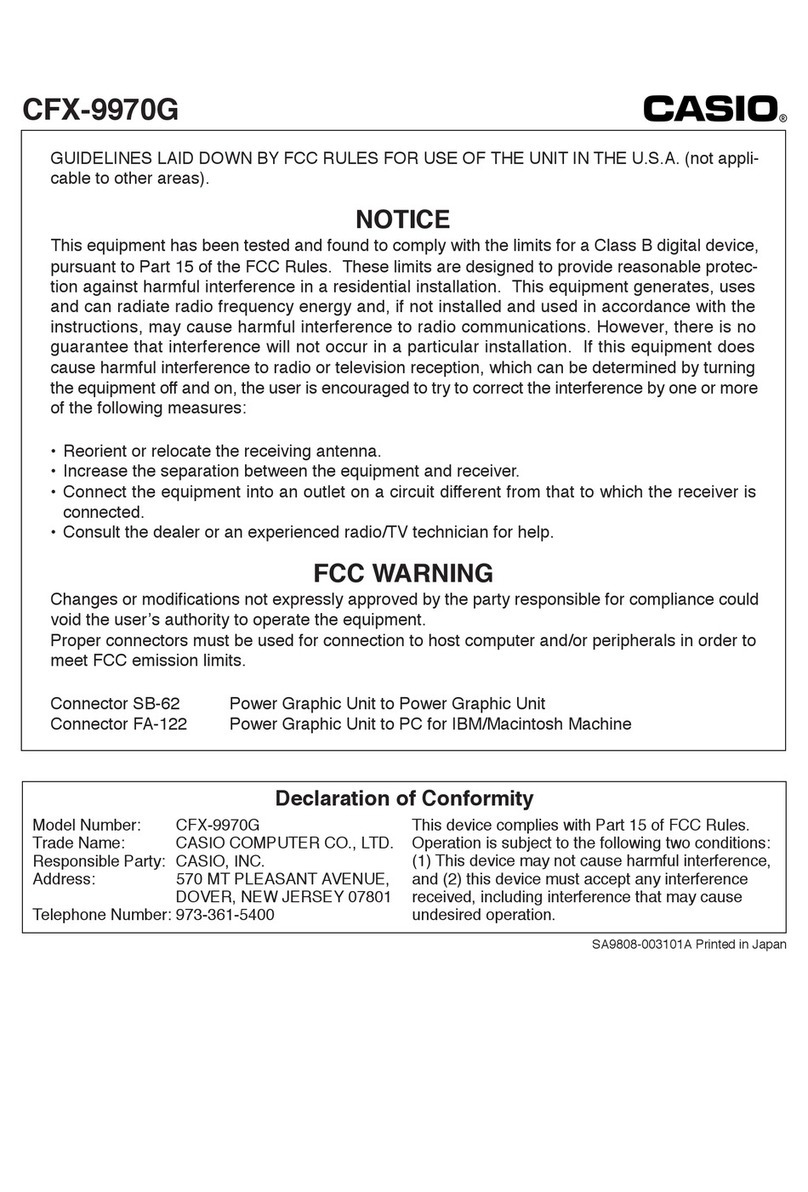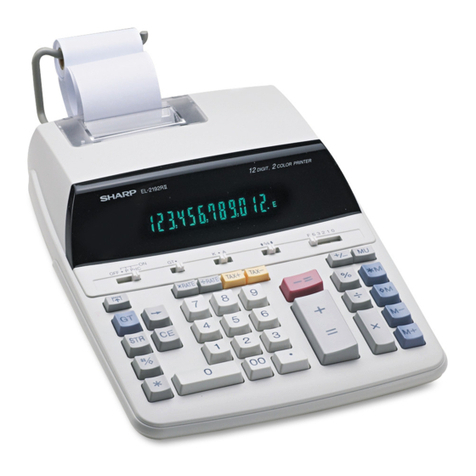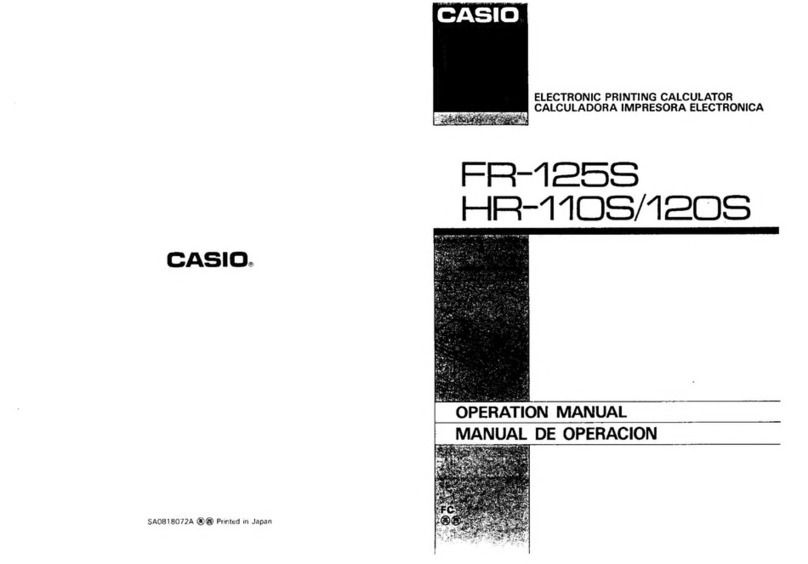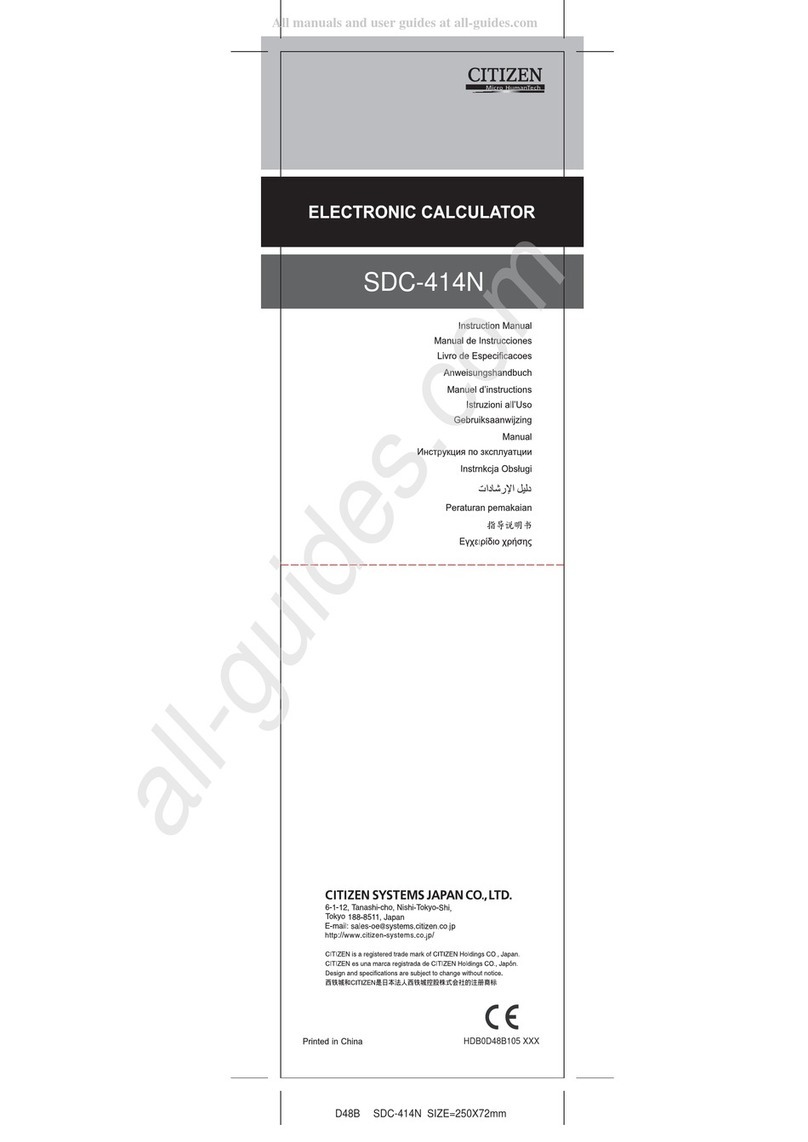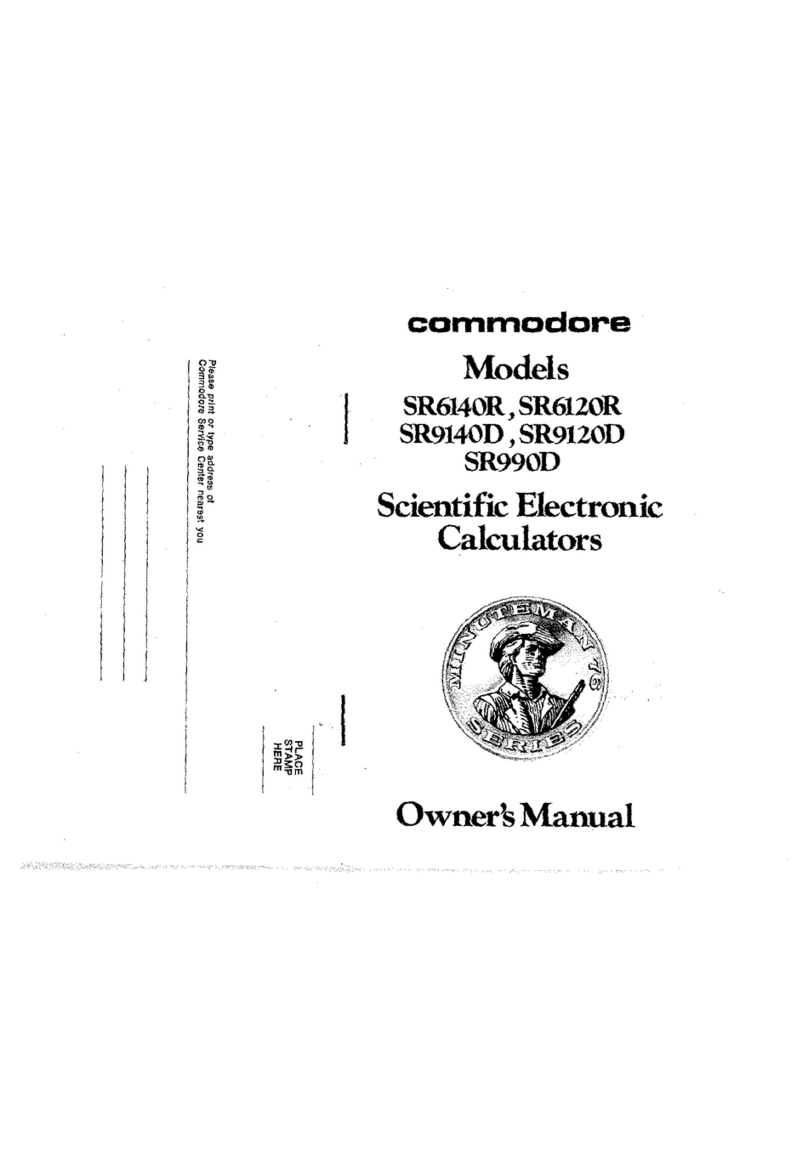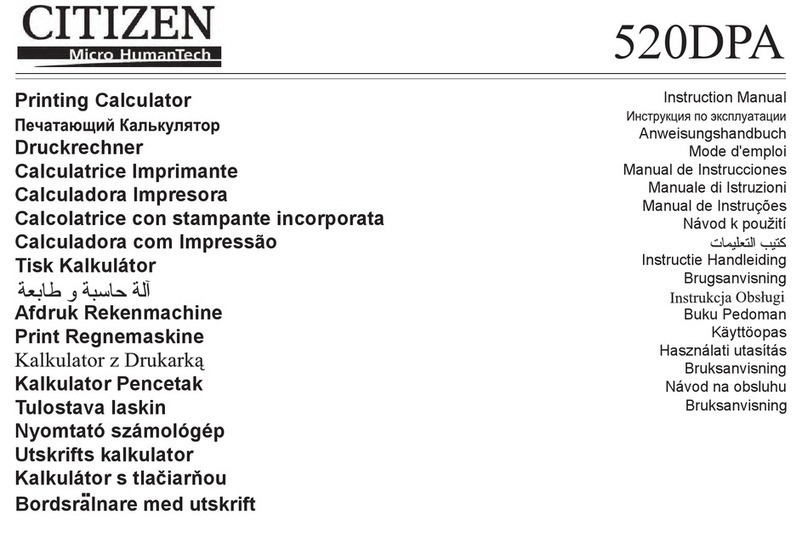
hp calculators
HP 9g Hyperbolic Functions
Hyperbolic functions
Trigonometric functions are often called “circular” functions, because the value for the cosine and sine of an angle lie on
the unit circle defined by X2+ Y2= 1 ( points on the unit circle will have the X and Y coordinate of ( Cosine( theta ),
Sine( theta ) ) ). Hyperbolic trigonometric functions have asimilar relationship, but with the hyperbola defined by the
equation X2– Y2= 1.
Given a value for Z, the hyperbolic functions are defined by:
Z
Z
Z
ee
Z
ee
ZZZZZ
cosh
sinh
tanhcoshsinh =
+
=
−
=
−
22
Assume that Z is 3. The position on the unit hyperbola X2– Y2= 1 is defined by the point (COSH(Z),SINH(Z)), where
COSH is the hyperbolic cosine and SINH is the hyperbolic sine. The value for the SINH(3) is equal to 10.0179 and the
value of COSH(3) is 10.0677. When 10.0677 ×10.0677 – 10.0179 ×10.0179 is evaluated, the value is 1, so the point
falls on the unit hyperbola. The hyperbolic tangent is defined as the hyperbolic sine divided by the hyperbolic cosine.
Hyperbolic functions are similar to circular trigonometric functions in many ways. Infact, if an identity is true for circular
trigonometric functions, there is a corresponding identity in hyperbolic functions in which the sign of any product of two
sines is changed (including tangent which is sine/cosine), this is known as Osborne’s rule. For example,
cos(A+B) = cos A cos B – sin A sin B gives cosh(A+B) = cosh A cosh B + sinh A sinh B
and sin2A + cos2A = 1 gives cosh2A – sinh2A = 1
Another interesting property is that for all Z > 0, tanh Z < Z < sinhZ < cosh Z. One of the examples in the HP 9g learning
module Graphing Functions – Part 1 verifies these inequalities by plotting the hyperbolic functions on the HP 9g .
If x = sinh y, then y is defined to be the inverse hyperbolic sine (abbreviated as sinh-1 or arcsinh). The other inverse
hyperbolic functions are similarly defined, but notice that y = cosh-1 Z is only defined for y ≥0.
Hyperbolic functions are useful in integration and have applications in many areas of engineering. For example, the
shape formed by a wire freely hanging between two points (known as a catenary or chainette curve) is described by the
hyperbolic cosine (COSH). Hyperbolic functions are also used in electrical engineering applications.
On the HP 9g, hyperbolic functions are accessed by pressing the ~m keys and then the appropriate trigonometric
key or inverse trigonometric key. Once ~m has been pressed, the HYP annunciator is displayed; to cancel this
mode just press ~m again. Notice that hyperbolic functions are not affected by the angle mode.
Practice using hyperbolic functions
Example 1: Find the Guadermannian of 2.
Solution: The Guadermannian function (gd) of Z is defined as tan-1 sinh Z. Press
~j~mH2=
hp calculators - 2 - HP 9g Hyperbolic Functions - Version 1.1
